The Genesis Mint Concept Is a Perplexing Two-Seat Electric City Car
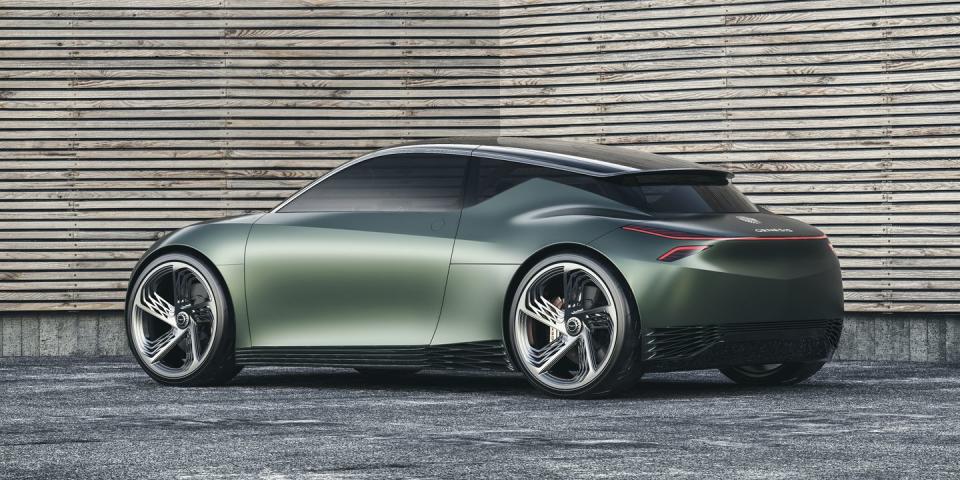
Genesis's new Mint concept is a two-door electric city car that the brand would like to see enter production in the future.
The cargo space is accessed by two reverse-opening scissor doors on the sides of the car.
The interior features a bench seat and minimal instrumentation.
Genesis thinks it's time to break the luxury-car mold, and it's doing so with a new concept car that has made its debut at the New York auto show. Called the Mint-the name comes from the car's bright matte Hunter Green paint-it's a two-seat, two-door electric city car that's a little hard to figure out. At a preview event in New York City ahead of the Mint's unveiling, we got to get up close with the car and learn more about it from Genesis's executive vice president, Manfred Fitzgerald, and Hyundai's global head of design, SangYup Lee.
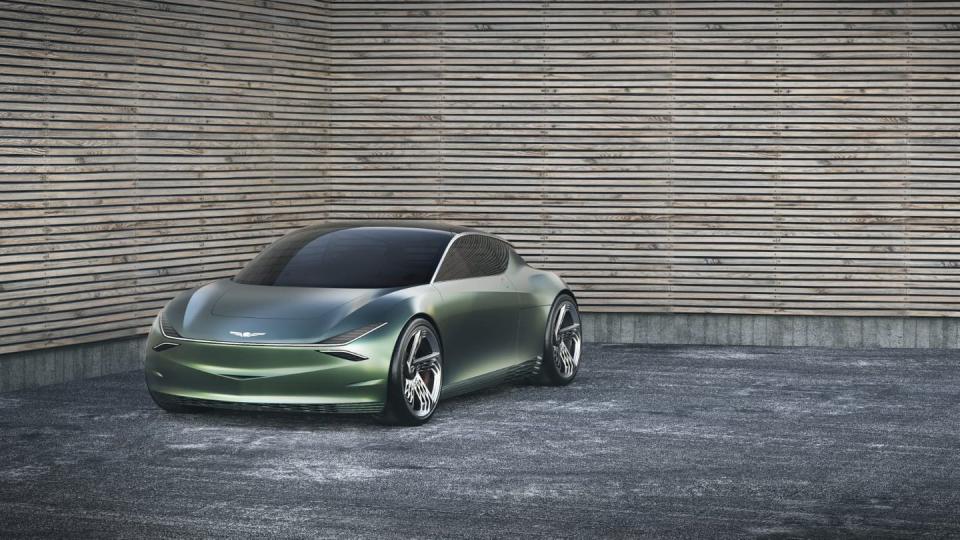
Fitzgerald says that the luxurious city car segment is "a white spot on the map for OEMs," one that the Mint looks to fill. It purposely doesn't fit into the typical model hierarchy; luxury in the automotive world has typically been about "size does matter," but Genesis wants to think differently. "We don't want 'Big car is expensive, small car is cheaper.' We want each car to have its own character," Lee explains.
With the Mint, Genesis is asking, "Can small be luxurious?" and hoping that the public responds with a resounding "Yes."
The Mint was a collaboration between Genesis's American, German, and Korean design studios. Lee says even though it has a wide, sporty stance and a coupelike body, it wasn't created to be a performance car, but more of a design statement like the original Audi TT. Genesis's now-signature quad headlights have been given a rethink, with all four getting a winglike design and the top set being connected by a light strip; the taillights have a nearly identical design. In place of the Genesis crest grille is a tiny V-shaped opening at the base of a bigger crease that echoes the grille's shape. The roofline is radical, with a kicked-up C-pillar, an upright rear window, and a trunklike deck reminiscent of the 2002 Renault Mégane.
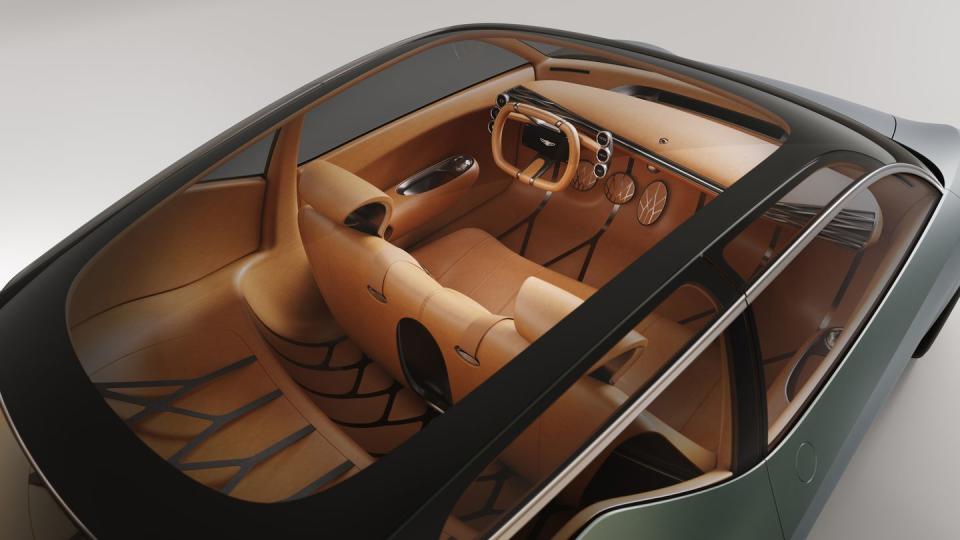
Up close, the Mint looks a lot bigger than it actually is. It's described as an A-segment car in the vein of the Fiat 500 and the Mini Cooper, but no official dimensions have been given. The wheels are huge and pushed out to the corners, and the overhangs are extremely short. The Mint's wide rear haunches reminded us of mid-engined sports cars like the Porsche Boxster. The Mint's battery pack is located under the floor, and while Genesis hasn't talked about pack size or given any details about the motor (or motors), the company says the car has a range of about 200 miles and 350-kW fast-charging capability.
An Interior for Relaxing in
The interior is covered in Cognac leather and is even more forward-thinking in design than the exterior, having been designed like a space-constrained luxury apartment in a city. It has a two-across bench seat (that could sit three, Lee admits), and both the bench and the entirety of the instrument panel are powered, angling towards the driver's door when it opens for easier ingress and egress. Instrumentation is kept to a minimum, with a small screen mounted in the center of the steering wheel and three round touchscreen buttons on each side of the wheel, which Lee says were designed to be at a fingertip's reach.
The minimalist theme is all about relaxation. "Are screens all over the place really ideal?" asks Lee. "It's good to be connected, but you're already connected all day in your office."
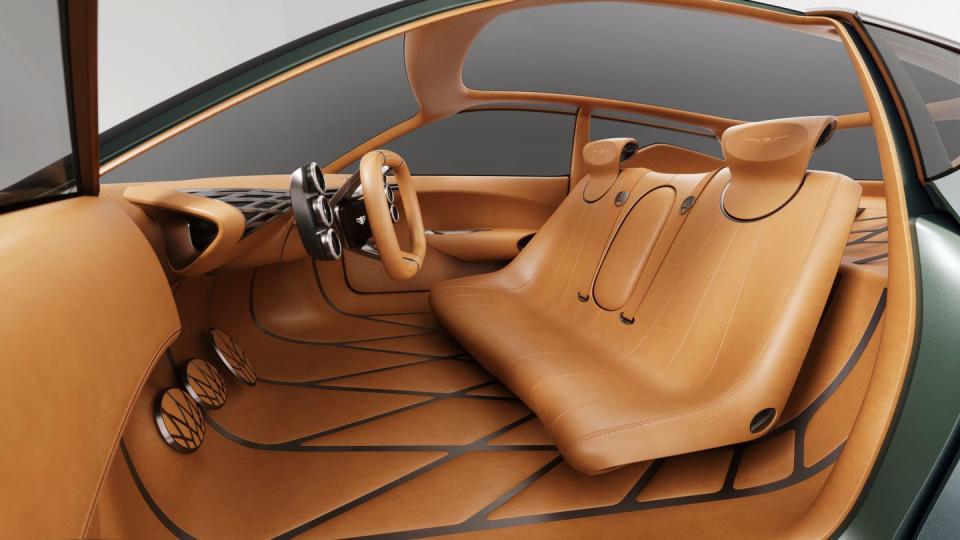
One feature that will make its way to future Genesis products is the spherical control located in the center armrest. When the car is turned on, the sphere rotates around to become the control for the driving modes; Lee says this is so you always know when an electric car is on, something that isn't always apparent. The sphere shape is echoed on the interior door handles, the rings around which control the windows. Another key design element for the Genesis brand is the diamond-shaped pattern called G-Matrix; it is found on the wheels, the lower body, the interior floor, the pedals, and many of the interior's structural components.
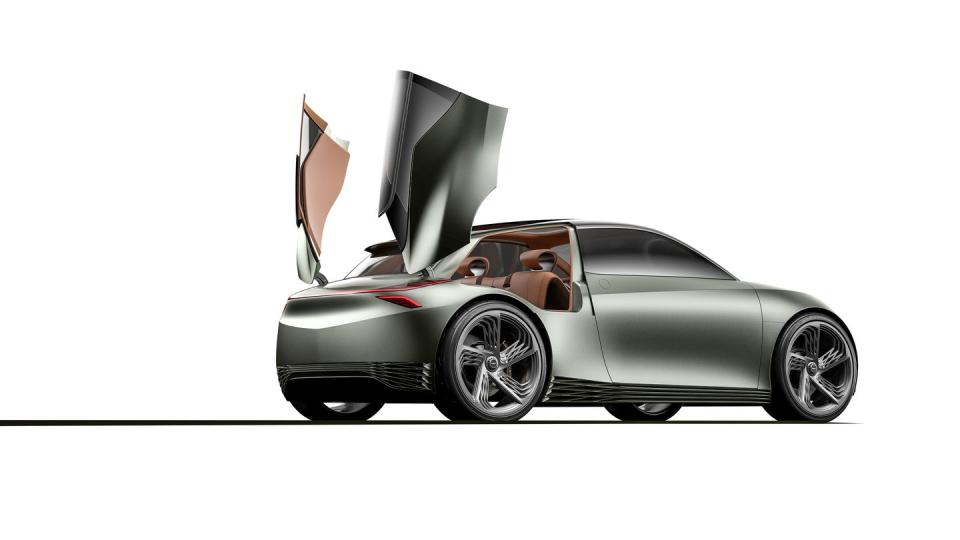
A large cargo area is located behind the bench seat, but instead of being accessed by a conventional rear hatch or trunk-which would be a bit tough to do given the Mint's design and central rear charging port-luggage is loaded in and out via a reverse-opening scissor door on either side of the car. As ridiculous as they are, the cargo doors are something that Lee says he could eventually see reaching production.
Production Plans?
Lee told us that Genesis doesn't do pie-in-the-sky "flying carpet" concept cars-everything that they create could potentially have production intent; everything is a potential showcase for designs and features that will appear on real cars. He described last year's Essentia concept as the "right side" of the brand, with the Mint covering the left side, and he wants both to reach production. But even after seeing the Mint for ourselves, we're not convinced that there's actually a market for this kind of car. Genesis really seems to think there is, though. With no other luxury brand making (or even thinking of) a city car like the Mint, the Korean upstart either is a bit delusional or really on to something.
('You Might Also Like',)

 Yahoo Autos
Yahoo Autos 